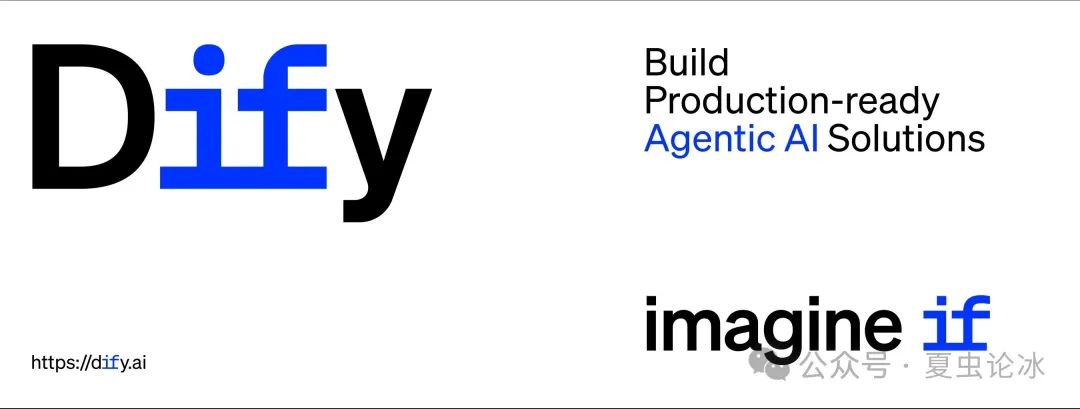开源Agent平台Dify源码剖析系列(五)核心模块core/agent之CotChatAgentRunner
每一篇文章都短小精悍,不啰嗦。
笔者寄语
本期介绍Dify框架的核心模块core/agent。接下来我们一起深入剖析core/agent目录下的所有代码,并以通俗易懂的方式解释。我们需要先了解这个目录的完整结构,然后逐个分析关键文件,最后总结整个Agent框架的设计和工作原理。
首先,让我查看core/agent目录的完整结构:
dify/api/core/agent.├── base_agent_runner.py # Agent框架的基础实现├── cot_agent_runner.py # Chain of Thought (CoT) Agent Runner的实现├── cot_chat_agent_runner.py # CoT Chat Agent Runner的实现├── cot_completion_agent_runner.py # CoT Completion Agent Runner的实现├── entities.py # 定义了Agent框架中的核心实体和数据结构├── fc_agent_runner.py # CoT Completion Agent Runner的实现├── __init__.py├── output_parser│ └── cot_output_parser.py # Chain of Thought输出解析器的实现└── prompt└── template.py # Agent提示模板的实现

CotChatAgentRunner 类继承自 CotAgentRunner,是专门为聊天场景优化的思维链代理运行器。其核心职责是构建符合思维链范式的提示模板,将系统指令、用户问题、历史对话和工具信息整合为大语言模型可理解的格式。下面我们从「功能定位→核心方法→构建流程→技术细节」四个层面进行剖析。
一、功能定位:聊天场景下的「提示工程师」
CotChatAgentRunner 的核心作用是将复杂的对话上下文转化为引导模型思考的提示信息。它解决了两个关键问题:
- 结构化提示构建
将系统指令、工具列表、历史对话等信息组织成特定格式(如 ReACT 范式),引导模型按思维链方式思考。
- 多模态支持
处理用户上传的文件(如图像),将其转化为模型可理解的格式(如文本描述)。
例如,当用户发送包含图片的问题(如「分析这张销售图表的趋势」)时,CotChatAgentRunner 会:
将图片转换为文本描述(如「一张柱状图,展示了 2024 年 1-6 月各地区销售额」);
结合系统指令(如「你是数据分析师,请使用工具分析图表数据」);
历史对话(如用户之前的问题);
可用工具(如「数据可视化工具」「趋势预测工具」);
构建完整的提示模板,发送给模型。
二、核心方法:三大提示构建器
类中定义了三个核心方法,分别负责构建系统提示、用户查询和完整提示链:
1. _organize_system_prompt():构建系统指令
def _organize_system_prompt(self)-> SystemPromptMessage:
assert self.app_config.agent and self.app_config.agent.promptfirst_prompt = self.app_config.agent.prompt.first_prompt# 填充模板变量system_prompt =(first_prompt.replace("{{instruction}}", self._instruction)
.replace("{{tools}}", json.dumps(jsonable_encoder(self._prompt_messages_tools)))
.replace("{{tool_names}}",", ".join([tool.name for tool in self._prompt_messages_tools]))
)return SystemPromptMessage(content=system_prompt)
关键操作:
从配置中获取初始提示模板(如
first_prompt);动态填充三个关键变量:
{{instruction}}:用户指令(如「分析销量趋势」);
{{tools}}:可用工具列表的 JSON 字符串(包含工具名称、描述、参数);
{{tool_names}}:工具名称的逗号分隔列表(如
sales_dataset, chart_generator)。
示例输出(简化版):
你是一位专业的数据分析师。可用工具包括:
[
{"name": "sales_dataset", "description": "查询销售数据集", ...},
{"name": "chart_generator", "description": "生成图表", ...}
]
请根据用户需求,合理使用工具解决问题。
2. _organize_user_query():处理用户输入(含多模态)
def _organize_user_query(self, query, prompt_messages):
if self.files:# 如果用户上传了文件(如图像)contents =[TextPromptMessageContent(data=query)]# 文本部分# 获取图像细节配置(如高/中/低描述)image_detail_config = self.application_generate_entity.file_upload_config.image_config.detailimage_detail_config = image_detail_config or ImagePromptMessageContent.DETAIL.LOW# 将每个文件转换为模型可理解的格式
forfilein self.files:contents.append(file_manager.to_prompt_message_content(
file, image_detail_config=image_detail_config
)
)prompt_messages.append(UserPromptMessage(content=contents))
else:# 纯文本输入prompt_messages.append(UserPromptMessage(content=query))return prompt_messages
关键操作:
处理多模态输入:将用户上传的文件(如图片)转换为
ImagePromptMessageContent对象,包含图像描述;图像细节配置:通过
image_detail_config控制描述的详细程度(如「低」仅包含基本信息,「高」包含像素级细节)。
示例场景:
用户发送问题「分析这张图表」并上传图片 → 方法将图片转换为「一张包含 2024 年各季度销量数据的折线图」,与文本问题合并为多模态输入。
3. _organize_prompt_messages():整合所有提示组件
def _organize_prompt_messages(self)->list[PromptMessage]:
# 1. 构建系统提示system_message = self._organize_system_prompt()# 2. 构建当前助手回复(基于历史思考步骤)
if self._agent_scratchpad:assistant_message = AssistantPromptMessage(content="")
for unit in self._agent_scratchpad:
if unit.is_final():assistant_message.content +=f"Final Answer: {unit.agent_response}"
else:assistant_message.content +=f"Thought: {unit.thought}\n\n"
if unit.action_str:assistant_message.content +=f"Action: {unit.action_str}\n\n"
if unit.observation:assistant_message.content +=f"Observation: {unit.observation}\n\n"assistant_messages =[assistant_message]
else:assistant_messages =[]# 3. 构建用户查询query_messages = self._organize_user_query(self._query,[])# 4. 整合历史消息和当前消息
if assistant_messages:historic_messages = self._organize_historic_prompt_messages(
[system_message,*query_messages,*assistant_messages, UserPromptMessage(content="continue")]
)messages =[system_message,*historic_messages,*query_messages,*assistant_messages, UserPromptMessage(content="continue")]
else:historic_messages = self._organize_historic_prompt_messages([system_message,*query_messages])messages =[system_message,*historic_messages,*query_messages]return messages
关键操作:
- 思维链格式化
:将历史思考步骤(
_agent_scratchpad)转换为 ReACT 格式的文本(如Thought: ... Action: ... Observation: ...); - 历史对话整合
:通过
_organize_historic_prompt_messages方法,将历史消息转换为模型可理解的格式,并添加continue标记,引导模型继续思考; - 多轮对话支持
:在多轮迭代中,动态更新
assistant_messages,保留完整的思考链条。
三、构建流程:从用户输入到模型提示
以用户提问「分析近 3 个月销量趋势」为例,看 CotChatAgentRunner 如何构建提示:
系统提示(简化版):
你是一位专业的数据分析师。可用工具包括:["sales_dataset", "chart_generator"]。
请按以下格式回答: Thought: 我需要... Action: {"name": "工具名", "parameters": {"param1": "value"}} Observation: 工具返回的结果 ...(重复思考-行动-观察) Final Answer: 最终答案用户查询:
User: 分析近3个月销量趋势
第一轮思考(假设模型输出):
Assistant:
Thought: 我需要先获取近3个月的销量数据,使用sales_dataset工具。 Action: {"name": "sales_dataset", "parameters": {"time_range": "近3个月"}}工具调用与观察:
系统调用
sales_dataset工具,获取数据;- 将结果作为
Observation添加到思考链:Observation: 近3个月销量数据:1月1000,2月1200,3月1300,呈上升趋势。
第二轮思考(模型基于观察继续思考):
Thought: 已获取数据,销量呈上升趋势。需要生成图表可视化,使用chart_generator工具。
Action: {"name": "chart_generator", "parameters": {"data": [...]}}最终答案:
Final Answer: 近3个月销量呈上升趋势(1月1000→2月1200→3月1300)。已为您生成趋势图(见附件)。
四、技术细节与设计亮点
多模态兼容性:
通过
file_manager.to_prompt_message_content方法,将不同类型的文件(如图像、文档)转换为模型可理解的格式,支持跨模态推理。
类型安全:
使用
assert isinstance(assistant_message.content, str)确保类型安全,避免在字符串拼接时出现类型错误;通过
jsonable_encoder处理复杂对象的 JSON 序列化,确保工具列表正确转换为字符串。
迭代优化:
在多轮迭代中,通过
UserPromptMessage(content="continue")引导模型继续思考,而不是重新开始;动态更新工具列表(如最后一轮迭代时移除所有工具,强制模型输出最终答案)。
模板灵活性:
使用字符串替换(
replace)而非硬编码,允许通过配置文件自定义提示模板,适应不同场景需求。
五、总结:思维链代理的「提示设计哲学」
CotChatAgentRunner 的核心价值在于通过精心设计的提示模板,将大语言模型转化为遵循特定思维范式的智能代理。它的设计哲学包括:
- 结构化引导
通过 ReACT 等范式,将自由文本生成转化为结构化的「思考→行动→观察」循环;
- 透明化推理
将模型的内部推理过程显式化(如
Thought、Action),增强可解释性; - 工具增强
通过外部工具扩展模型能力,解决其「知识边界」和「计算限制」问题;
- 多模态整合
打破纯文本交互的限制,支持图像、文件等多种输入形式。
这种设计让 AI 代理不仅能回答问题,还能展示思考过程、调用外部资源、处理复杂任务,真正实现从「问答系统」到「决策助手」的跨越。
